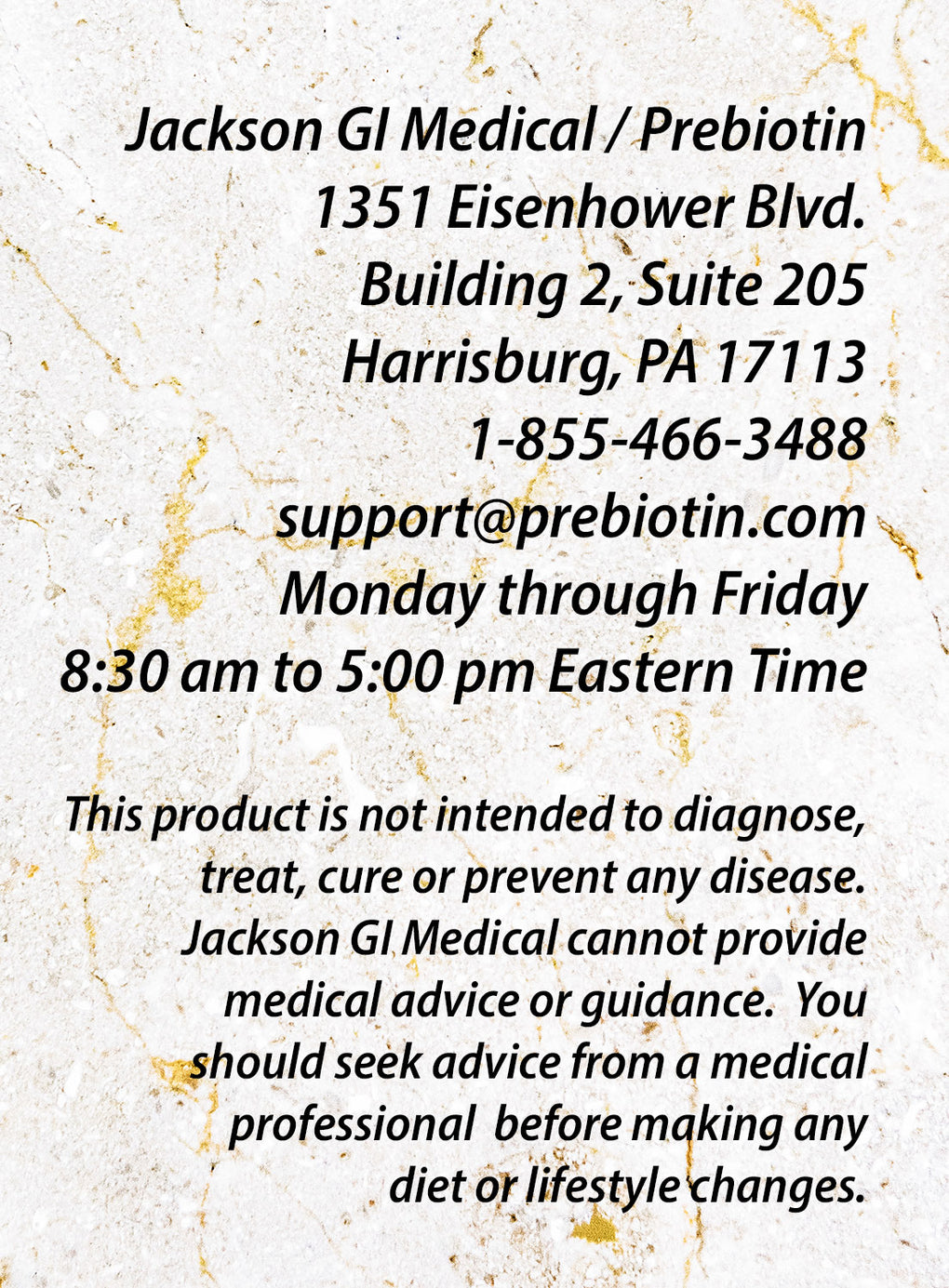Can Prebiotics Help With Juvenile Arthritis?
By Frank W. Jackson, MD, Founder and Chairman Emeritus
Updated on June 29, 2018 by Prebiotin Team

Juvenile arthritis isn’t a single disease — it’s actually a group of related illnesses, first occurring during childhood. These diseases haves names like juvenile idiopathic [“without clear cause”] arthritis, juvenile dermatomyositis, and juvenile lupus. While most children with juvenile arthritis will experience red, swollen, painful joints, some children do not. Some children may have different signs and symptoms of the disease, such as eye problems, skin abnormalities or blood vessel disease.
The common feature of every form of juvenile arthritis is a problem with the immune system. While there is no known cure for the disease, research indicates that prebiotics may be able to help control juvenile arthritis.
What is Juvenile Arthritis?
Juvenile Arthritis (JA) is the most common chronic rheumatic disease of childhood, according to the Arthritis Foundation. It can affect children of all ages, races, and ethnic backgrounds. While one in five adults has the debilitating pain of arthritis, about 300,000 children age 16 and under also have the disease, a leading cause of short- and long-term disability.
Most types of JA are autoimmune disorders, meaning that the immune system, which normally helps your body fight infection, attacks your body’s own tissues. Each type has distinct genetic background, other causes, symptoms, and clinical manifestations. [1] Different parts of the world are associated with numerous different subtypes of the disease, indicating there may be a genetic predisposition to getting the illness.[1,2]
According to the Arthritis Foundation, children with juvenile arthritis will often experience red, swollen, painful joints, stiffness, and loss of motion, commonly in knees, hands, and feet, among other symptoms. One early sign of JA may be limping in the morning.
If your child is experiencing symptoms, it is best to consult a pediatric rheumatologist to make an accurate diagnosis. He or she will review symptoms, take X-rays, and conduct lab tests. The goal is to reduce symptoms and minimize joint damage with medications and exercise.
Symptoms can come and go, according to the National Institute of Arthritis and Musculoskeletal and Skin Diseases. Some children have just one or two inflammation flare-ups (or flares), then symptoms get better or go away (remission). Other children have symptoms that never go away. While some children do achieve permanent remission, any damage to the joints remains, which can result in disability.
“Juvenile arthritis (JA) is one of the most common childhood diseases in the United States, affecting nearly 300,000 children. JA is actually an umbrella term for the various autoimmune and inflammatory conditions that affect children 16 years or younger, the most common form being juvenile idiopathic arthritis (JIA), which replaces the term ‘juvenile rheumatoid arthritis.’”
Current Treatments for JA
Juvenile arthritis is especially difficult because it impacts the core of childhood activities—energetic play, sports, even schoolwork. While treatments help, more research is necessary to finetune and expand therapeutic approaches.
The American College of Rheumatology recommends a range of treatments: [3]
- Nonsteroidal Anti-Inflammatory Drugs (NSAIDs)
- Disease-Modifying Antirheumatic Drugs (DMARDs) (most commonly methotrexate)
- Corticosteroids (like prednisone)
- Exercise and regular stretching routines (helpful in preventing joint contractures, in which healthy connective tissue becomes scarred and inflexible, preventing movement)
- Biologics
More recently, some types of JA are being treated with biologics—genetically engineered proteins made from human genes and other biological sources. Biologics can zero in on specific elements that control the inflammation process, rather than affecting the entire immune system.
According to the FDA, “researchers don’t yet have a lot of long-term safety information on use of these drugs in children.” Families must work with their physicians to weigh the potential benefits with the possible negative side effects of biologics.
Costs and coverage of these treatments depend on the parent’s insurance coverage. For help with copays and the other costs of medications, check out the Healthcare Resources section of the Kids Can Get Arthritis, Too website.
The Gut’s Immune System and the Role of Gut Bacteria
The gastrointestinal tract has a complex and vibrant immune system. The gut’s immune system helps protect the body against pathogens that may otherwise enter the body through the intestinal tract. Moreover, the bacteria that live within the gut are critical to the proper functioning of the gut’s immune system. [5,6] By extension, gut bacteria are important for the health of the whole body’s immune system, since it is estimated that as much as 80% of our entire immune system is in our gut!
Beneficial bacteria improve regularity, mineral absorption, and keep the barrier between the colon and the rest of the body strong to prevent toxins from moving into the bloodstream.
As a result, a healthy balance of bacteria help to reduce disease risk and disease symptoms, including obesity, heart disease, diabetes—and symptoms of arthritis. A growing body of studies have also found that prebiotic fiber, both in food and in supplement form, can nurture the growth of desirable bacteria. [5]
Research with Juvenile Arthritis and the Gut Microbiome
It may seem odd that juvenile arthritis could be related to bacteria in the gut, but that may be the case. In one preliminary study from the Netherlands, children with juvenile idiopathic arthritis were found to have a different population of bacteria in their guts compared to healthy children without juvenile arthritis.[7] Specifically, children with juvenile idiopathic arthritis had a “lack of diversity” of a specific type of bacteria (Firmicutes), while healthy controls had greater diversity in this type of bacteria.
Other forms of juvenile arthritis show similar results. Children with enthesitis-related arthritis (symptoms include soreness and irritation where muscles and ligaments attach to the bones) had lower numbers of Faecalibacterium species in the gut.[8]
Other researchers have shown that some forms of bacteria are uniquely present in children with juvenile arthritis — specifically, Actinobacteria and Fusobacteria.[9] A different type, Lentisphaerae, was present only in healthy children.
In a 2015 study of medical records from a group of children in the UK [10], researchers also found “microbiome disturbance” in children who had been exposed to antibiotics and then developed JA. The risk for developing JA was dose dependent—in other words, children who had been exposed to more frequent or higher doses had a greater risk of developing JA. Researchers concluded that “Antibiotic exposure may play a role in JIA pathogenesis, perhaps mediated through alterations in the microbiome.”
These results suggest that the various types of juvenile arthritis are linked to differences in the microbiome.
 Can Prebiotics Help Children With Juvenile Arthritis?
Can Prebiotics Help Children With Juvenile Arthritis?
The only way to definitively determine whether prebiotics help children with juvenile arthritis is to perform a clinical trial. Unfortunately, this testing has not yet been done. Nonetheless, there are compelling reasons to think that prebiotics may indeed be helpful in juvenile arthritis.
Prebiotics like Prebiotin, along with prebiotic fiber rich foods like chicory root, bananas, asparagus, leeks, onions, Jerusalem artichokes, and many others, selectively support the growth and development of healthy gut bacteria.[5,11,12] Research has found that prebiotic fiber ferments in the large intestine and serves as nourishment for desirable bacteria, crowding out the undesirable bacteria.
Therefore, numerous studies done with Prebiotin, an especially rich, chicory root-based source of prebiotic fiber (inulin and oligofructose), indicate regular supplementation leads to a wide range of benefits. These include better calcium absorption, less anxiety and better sleep, weight control, and reduced inflammation.
Research studies in juvenile arthritis focus on achieving many of these same benefits. To list just a few:
- Reduction of inflammation to improve sleep quality and pain reduction [13];
- Preventing bone loss since childhood onset arthritis is associated with low bone mass and strength [14];
- Weight control since obesity can make symptoms of juvenile arthritis worse. [15]
Since research indicates that taking Prebiotin regularly may help with some of the most troublesome aspects of juvenile arthritis, incorporating more prebiotic fiber like Prebiotin into your child’s diet can have major therapeutic benefits.
Summary
Research has shown that there are differences in gastrointestinal bacteria between healthy children and children with juvenile arthritis. Children with JA may have a microbiome with less bacterial diversity, fewer types of beneficial bacteria, and in some cases, higher levels of undesirable bacteria.
While more studies are necessary to determine if using prebiotics can prevent or treat juvenile arthritis, numerous research studies have shown that prebiotics like Prebiotin can support the growth and development of healthy gastrointestinal bacteria and may reduce symptoms related to juvenile arthritis.

As reproduced in the CDC website Vital Signs Arthritis.
References
- Consolaro A, Ravelli A. Unraveling the phenotypic variability of juvenile idiopathic arthritis across races or geographic areas – key to understanding etiology and genetic factors? J Rheumatol. 2016;43:683–685. doi: 10.3899/jrheum.160173.
- Giancance G, Consolaro A, Lanni St, et al. Juvenile Idiopathic Arthritis: Diagnosis and Treatment. Rheumatol Ther. 2016 Dec; 3(2): 187–207.
- Ringold S, Weiss PF, Beukelman T, et al. 2013 Update of the 2011 American College of Rheumatology Recommendations for the Treatment of Juvenile Idiopathic Arthritis: Recommendations for the Medical Therapy of Children With Systemic Juvenile Idiopathic Arthritis and Tuberculosis Screening Among Children Receiving Biologic Medications. Arthritis Care Res (Hoboken). 2013 Oct; 65(10): 1551–1563. doi: 10.1002/acr.22087
- Quigley EM. Gut bacteria in health and disease. Gastroenterol Hepatol (NY). Sep 2013;9(9):560-569.
- Hannah D. Holscher. Dietary fiber and prebiotics and the gastrointestinal microbiota. Gut Microbes. 2017;8:2, 172-184, DOI: 10.1080/19490976.2017.1290756.
- Fasano A, Shea-Donohue T. Mechanisms of Disease: the role of intestinal barrier function in the pathogenesis of gastrointestinal autoimmune diseases. Nat Clin Pract Gastroenterol Hepatol. 2005;2(9):416-422.
- Hissink Muller P, Westedt P, Budding A, et al. PReS-FINAL-2160: Intestinal microbiome in polyarticular juvenile idiopathic arthritis: a pilot study. Pediatric Rheumatology. 2013;11(2):1-2. doi:10.1186/1546-0096-11-s2-p172.
- Stoll ML, Kumar R, Morrow CD, et al. Altered microbiota associated with abnormal humoral immune responses to commensal organisms in enthesitis-related arthritis. Arthritis Research & Therapy. 2014;16(6):1-10. doi:10.1186/s13075-014-0486-0.
- Tejesvi MV, Arvonen M, Kangas SM, et al. Faecal microbiome in new-onset juvenile idiopathic arthritis. European Journal of Clinical Microbiology & Infectious Diseases. 2016;35(3):363-370. doi:10.1007/s10096-015-2548-x.
- Horton DB, Scott FI, Haynes K, et al. Antibiotic Exposure and Juvenile Idiopathic Arthritis: A Case–Control Study. Pediatrics From the American Academy of Pediatrics. July 2015
- Voreades N, Kozil A, Weir TL. Diet and the development of the human intestinal microbiome. Frontiers in Microbiology. 2014;5:494. doi:10.3389/fmicb.2014.00494.
- Vitetta L, Coulson S, Linnane AW, Butt H. The gastrointestinal microbiome and musculoskeletal diseases: a beneficial role for probiotics and prebiotics. Pathogens. 2013;2(4):606-626.
- Bromberg MH, Gil K, Schanberg LE. Daily sleep quality and mood as predictors of pain in children with juvenile polyarticular arthritis. Health Psychology. Mar 2012;31(2).
- Burnham JM, Shults J, Weinstein R, et al. Extended report: Childhood onset arthritis is associated with an increased risk of fracture: a population based study using the General Practice Research Database. 2006; 65(8).https://ard.bmj.com/content/65/8.
- Pelajo CF, Lopez-Benitez JM, and Miller LC. Obesity and disease activity in juvenile idiopathic arthritis. Pediatr Rheumatol Online J. 2012; 10:3. Published online 2012 Jan 12. doi: 10.1186/1546-0096-10-3
Additional Resources
- Active Beat: 12 Health Facts About Juvenile Idiopathic Arthritis
- American College of Rheumatology: Juvenile Arthritis: Fast Facts for Patients and Caregivers
- Arthritis Foundation: Kids Get Arthritis, Too
- CDC: At a glance 2016 Arthritis: https://www.cdc.gov/chronicdisease/resources/publications/aag/arthritis.htm
- CDC: Childhood Arthritis
- FDA U.S. Food & Drug Administration: Juvenile Arthritis–Discoveries Lead to Newer Treatments
- Medline Plus: Juvenile Arthritis
- National Institute of Arthritis and Musculoskeletal and Skin Diseases: Juvenile Arthritis
- Children, Teens
- National Diabetes Statistics Report, 2017 – Estimates of Diabetes and Its Burden in the United States
- NIH NIDDK, Risk Factors for Type 2 Diabetes: Body Mass Index Charts
- NIH Research Matters: Factors contributing to higher incidence of diabetes for black Americans, Jan 9. 2018
- U.S. Department of Health and Human Services Office of Minority Health






